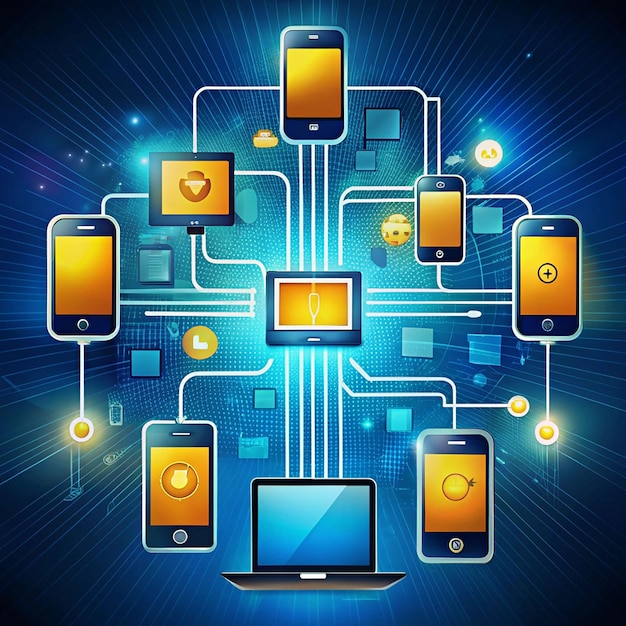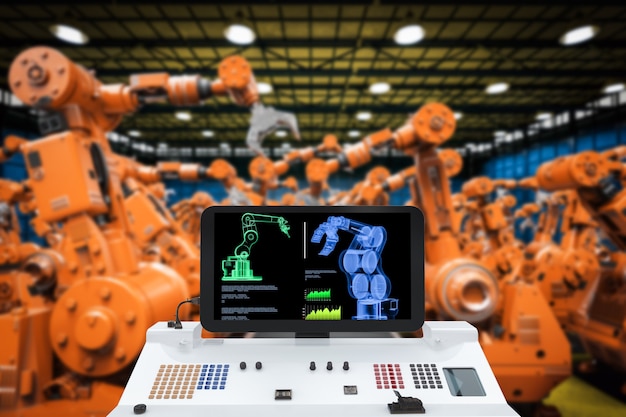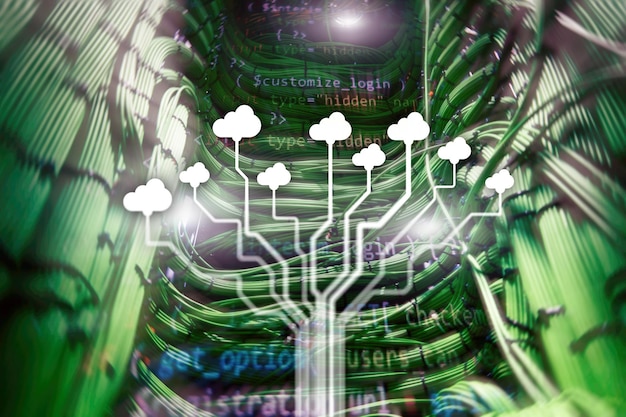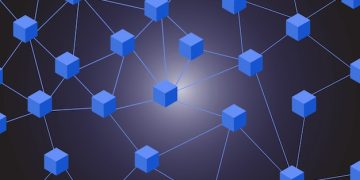Edge Computing: US Companies’ Competitive Advantage in Tech

Edge computing empowers US companies with a competitive edge by processing data closer to the source, reducing latency, improving real-time decision-making, and enabling innovative applications across various industries.
In today’s fast-paced digital landscape, edge computing: how US companies can gain a competitive edge has emerged as a game-changing technology. By processing data closer to its source, edge computing unlocks unprecedented opportunities for businesses to enhance efficiency, drive innovation, and stay ahead of the competition.
Understanding Edge Computing: A US Perspective
Edge computing is a distributed computing paradigm that brings computation and data storage closer to the devices where it is being gathered. This proximity minimizes latency, conserves bandwidth, and improves the overall performance of applications, making it particularly beneficial for US companies operating in a data-driven environment.
Key Benefits of Edge Computing
Implementing edge computing can significantly impact several aspects of a company’s operations. Here are some notable advantages:
- Reduced Latency: Processing data near the source minimizes delays, crucial for time-sensitive applications like autonomous vehicles and augmented reality.
- Enhanced Data Security: Keeping data localized reduces the risk of breaches during transmission to distant servers.
- Cost Savings: Minimizing the data sent to centralized servers reduces bandwidth usage and associated costs.
- Improved Reliability: Edge computing enables operations even when network connectivity to a central server is intermittent or unavailable.
Edge computing empowers US companies to create more efficient and responsive systems, optimizing their operational workflows and customer experiences.
Edge Computing Applications in US Industries
Edge computing is transforming various sectors across the United States, offering tailored solutions that address specific industry challenges and needs. Let’s explore some prominent use cases.

Manufacturing
In manufacturing, edge computing facilitates predictive maintenance, real-time quality control, and optimized production processes. By analyzing data from sensors on equipment, manufacturers can identify potential failures before they occur, minimizing downtime and maximizing efficiency.
Healthcare
Edge computing enhances patient care through remote monitoring, real-time diagnostics, and faster response times. Wearable devices and medical sensors can transmit data to edge servers for immediate analysis, enabling healthcare providers to make timely decisions and deliver personalized treatments.
- Remote Patient Monitoring: Continuous data collection and analysis for proactive healthcare management.
- Real-Time Diagnostics: Faster processing of medical data for immediate insights.
- Emergency Response: Quick data analysis to improve response times during critical situations.
Across industries, edge computing is enabling more streamlined, efficient, and agile operations, allowing businesses to focus on strategic growth and innovation.
Implementing Edge Computing: Key Considerations for US Businesses
Successfully implementing edge computing requires careful planning and consideration of several key factors. US businesses must approach the integration strategically to maximize its benefits.
Infrastructure Readiness
Assessing the existing infrastructure and determining the necessary upgrades is crucial. This includes evaluating network capacity, server capabilities, and the deployment of edge devices.
Data Security and Compliance
Ensuring robust security measures at the edge is essential to protect sensitive data. US companies must comply with relevant regulations such as HIPAA, GDPR, and CCPA, depending on the industry and data being processed.

- Data Encryption: Protecting data both in transit and at rest.
- Access Control: Limiting access to sensitive data based on user roles and permissions.
- Regular Audits: Conducting routine security assessments to identify and address vulnerabilities.
Careful planning is essential to successfully integrate edge computing into existing systems, optimizing its potential for enhanced operations and customer experiences.
Edge Computing: Challenges and Solutions for US Companies
While edge computing offers numerous advantages, US companies may encounter certain challenges during implementation. Addressing these challenges proactively is key to realizing the full potential of edge technology.
Connectivity Issues
Maintaining reliable connectivity to edge devices and servers can be challenging, especially in remote or underserved areas. Solutions include using redundant network connections, optimizing data transmission protocols, and leveraging satellite connectivity.
Scalability Concerns
Scaling edge computing infrastructure to accommodate growing data volumes and increasing user demands requires careful planning. Solutions include using containerization technologies like Docker and Kubernetes, implementing automated deployment processes, and leveraging cloud-based management tools.
By anticipating and addressing these challenges, US companies can successfully implement edge computing, unlocking significant improvements in efficiency, innovation, and customer satisfaction.
The Future of Edge Computing in the US: Trends and Predictions
The future of edge computing in the United States is promising, with several trends and predictions shaping its evolution. As technology advances, edge computing is poised to become even more integral to business operations and daily life.
Increased Adoption of 5G
The widespread deployment of 5G networks will significantly enhance the capabilities of edge computing. 5G’s high bandwidth and low latency will enable faster data transfer, improved real-time processing, and support for more demanding applications.
Growing Integration with AI and Machine Learning
Edge computing is becoming increasingly integrated with artificial intelligence (AI) and machine learning (ML). Processing AI algorithms at the edge enables real-time decision-making, personalized experiences, and enhanced security. For example, AI-powered video analytics can be used to detect anomalies in real-time, improving security and safety.
With ongoing advancements and increasing integration with other technologies, edge computing is set to revolutionize industries and improve the lives of individuals across the United States.
Measuring the ROI of Edge Computing for US Companies
Determining the return on investment (ROI) of edge computing is crucial for US companies to justify their investments and optimize their strategies. Quantifying the benefits can provide valuable insights and drive further adoption.
Key Metrics to Track
Several key metrics can be used to measure the ROI of edge computing. These include:
- Latency Reduction: Measure the decrease in processing time for critical applications.
- Bandwidth Savings: Quantify the reduction in data transmission costs.
- Downtime Reduction: Track the decrease in equipment downtime due to predictive maintenance.
- Customer Satisfaction: Monitor improvements in customer satisfaction scores.
By tracking these metrics and comparing them to the costs of implementation, US companies can gain a clear understanding of the value generated by edge computing, enabling them to make informed decisions and drive continuous improvement.
| Key Point | Brief Description |
|---|---|
| 🚀 Reduced Latency | Processing data closer to the source minimizes delays. |
| 🔒 Enhanced Security | Local data processing reduces risk of data breaches. |
| 💰 Cost Savings | Minimizing data sent to servers reduces bandwidth costs. |
| 💡 Improved Reliability | Enables operations even with intermittent connectivity. |
Frequently Asked Questions About Edge Computing
What is edge computing and how does it differ from cloud computing?
What is edge computing and how does it differ from cloud computing?
Edge computing processes data near the source, reducing latency, while cloud computing processes data in centralized data centers, ideal for storage and large-scale analytics.
How can edge computing improve the security of data for US companies?
How can edge computing improve the security of data for US companies?
Edge computing enhances security by keeping data localized, reducing the risk of breaches during transmission to distant servers, and complying with data protection regulations.
In which industries is edge computing most beneficial?
In which industries is edge computing most beneficial?
Edge computing is highly beneficial in manufacturing, healthcare, retail, and transportation, where real-time data processing and low latency are critical for efficient operations.
What are the main challenges of implementing edge computing?
What are the main challenges of implementing edge computing?
The main challenges include ensuring reliable connectivity, managing distributed infrastructure, addressing data security and compliance concerns, and scaling the edge computing environment.
What future trends can US companies expect in edge computing?
What future trends can US companies expect in edge computing?
US companies can expect increased adoption of 5G, growing integration with AI and machine learning, and the development of new edge-based applications across various industries.
Conclusion
Adopting edge computing offers a strategic advantage for US companies by improving efficiency, enhancing security, and enabling real-time decision-making. By understanding its applications, addressing key considerations, and measuring its ROI, businesses can leverage edge computing to drive innovation and stay competitive in the rapidly evolving digital landscape.





